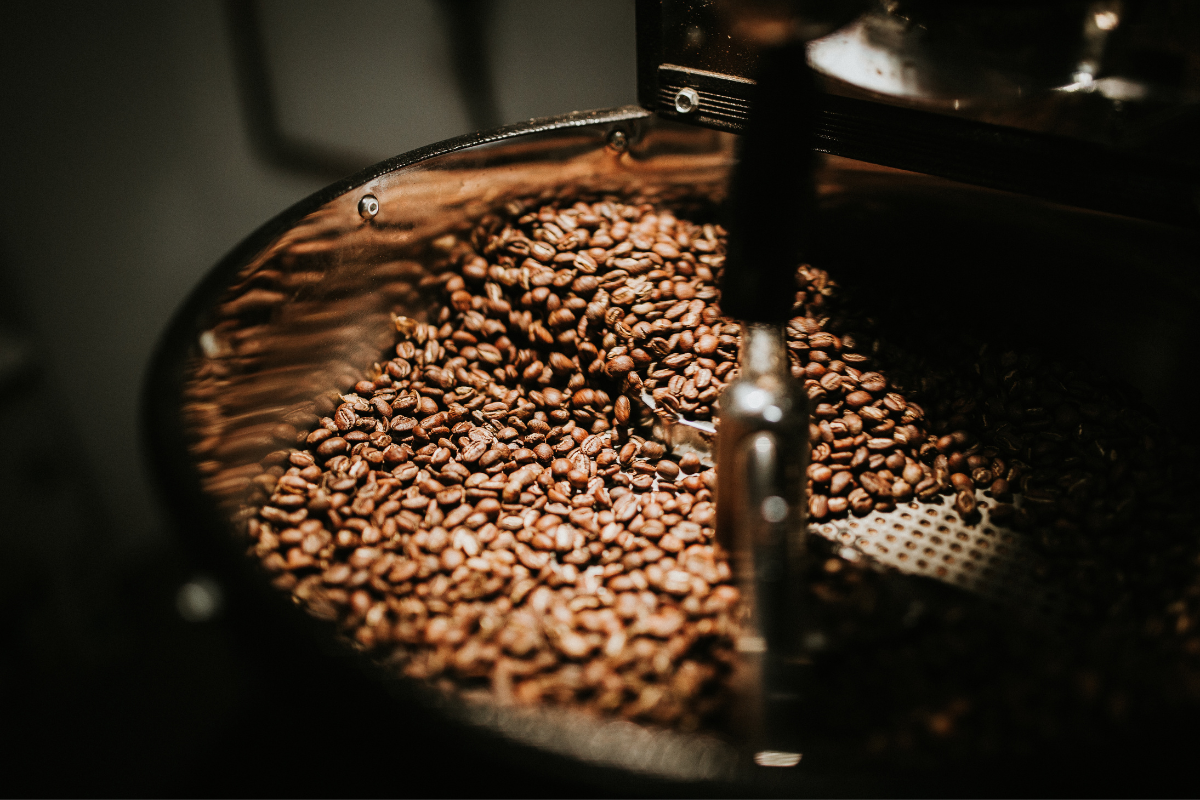The journey of a coffee bean from a ripe cherry on the branch to the fragrant grounds in your grinder is a complex one, involving far more than just picking and drying. After harvesting, coffee cherries undergo a crucial stage known as processing, which meticulously separates the bean from the fruit and prepares it for export. This step, often overlooked by consumers, is an incredibly impactful determinant of your coffee’s final flavor profile, body, and acidity. It’s a testament to human ingenuity and regional traditions, profoundly shaping the very essence of the brew you eventually savor.
Imagine tasting two coffees from the exact same farm, grown under identical conditions and roasted to the same degree, yet one explodes with vibrant fruitiness while the other offers a clean, bright, and nuanced cup. This remarkable difference is not magic; it’s the direct result of the processing method applied to the coffee cherries. From sun-dried naturals to meticulously washed beans and experimental honey processes, each technique interacts uniquely with the coffee’s inherent sugars and acids, unlocking distinct sensory experiences. Understanding these methods is key to appreciating the vast spectrum of flavors specialty coffee has to offer.
This article invites you on an insightful journey from bean to bloom, exploring the primary coffee processing methods and their profound impact on flavor. We’ll demystify the intricacies of the Washed, Natural, and Honey processes, examine the science behind their influence, and discuss how specific regions often favor certain techniques. Prepare to deepen your understanding of the hidden artistry that shapes your daily cup, realizing that the path a coffee cherry takes after harvest is just as vital as where it was grown.
What is Coffee Processing?
Coffee processing refers to the series of steps taken after the coffee cherries are harvested to remove the outer layers of the fruit (pulp, mucilage, parchment) and dry the inner green coffee bean to a stable moisture content (typically 10-12%). The goal is to prepare the bean for hulling, sorting, and ultimately, roasting, while preserving and enhancing its inherent flavor potential.
The three main categories of coffee processing are:
- Washed Process (Wet Process): Removes the fruit pulp before drying.
- Natural Process (Dry Process): Dries the entire cherry with the bean inside.
- Honey Process (Pulped Natural): Removes the skin but leaves some or all of the mucilage (sticky layer) intact during drying.
Each method fundamentally changes the way the bean interacts with the fruit’s sugars and fermentation, leading to distinct flavor outcomes.
The Primary Processing Methods and Their Flavor Signatures
Let’s delve into the details of each method and how they shape the coffee in your cup.
1. The Washed Process (Wet Process)
The Washed Process is the most common method in specialty coffee, known for producing a clean, bright, and consistent cup.
- Process Overview:
- Cherry Sorting: Ripe cherries are separated from unripe ones (often by floating them in water).
- Pulping: Cherries are passed through a pulper machine that removes the outer skin and most of the fruit pulp, leaving the bean encased in a sticky layer called mucilage and covered by the parchment layer.
- Fermentation: The beans, still covered in mucilage, are then transferred to fermentation tanks (with or without water). Enzymes break down the mucilage over 12-72 hours. This fermentation is a controlled process; too little can leave mucilage, too much can create off-flavors.
- Washing: After fermentation, the beans are thoroughly washed to remove all traces of mucilage.
- Drying: The clean, parchment-covered beans are then dried evenly on raised beds or patios, or in mechanical dryers, until they reach the optimal moisture content.
- Flavor Profile: Washed coffees are celebrated for their cleanliness, clarity, and bright, pronounced acidity. The flavors tend to be more distinct and nuanced, reflecting the inherent characteristics of the bean and its terroir without significant influence from the fruit. Expect floral, citrus, and crisp fruit notes, with a medium body.
- Where it’s Common: Central and South America (Colombia, Costa Rica, Guatemala), East Africa (Ethiopia, Kenya).
- Why it’s Unique: The controlled removal of the fruit and mucilage minimizes the impact of fermentation on flavor, allowing the bean’s intrinsic qualities to shine through.
2. The Natural Process (Dry Process)
The Natural Process is the oldest and simplest method, but also the riskiest, as it involves drying the entire coffee cherry.
- Process Overview:
- Cherry Sorting: Cherries are sorted to remove unripe or damaged ones.
- Drying: Whole, unpulped cherries are spread out on large patios, raised beds, or in mechanical dryers to dry. This process can take several weeks, during which the cherries are regularly raked or turned to ensure even drying and prevent mold.
- Hulling: Once completely dry (resembling raisins), the beans are mechanically hulled to remove the dried outer fruit and parchment layer.
- Flavor Profile: Natural processed coffees are famous for their intensely fruity, sweet, and full-bodied characteristics. As the bean dries inside the fruit, it absorbs sugars and flavors from the fruit, resulting in notes of blueberry, strawberry, tropical fruits, wine, chocolate, and a syrupy body. Acidity tends to be lower and mellower.
- Where it’s Common: Regions with dry climates and limited water resources, such as Ethiopia, Brazil, Yemen.
- Why it’s Unique: The direct contact with the fruit during drying imparts a distinct sweetness and fruitiness, creating a bolder and often more “wild” flavor profile.
3. The Honey Process (Pulped Natural)
The Honey Process is a hybrid method, developed primarily in Central America, bridging the gap between washed and natural methods. It gets its name from the sticky, honey-like mucilage left on the bean, not from actual honey.
- Process Overview:
- Cherry Sorting: Ripe cherries are sorted.
- Pulping: The outer skin is removed, similar to the washed process, but none or only part of the mucilage layer is removed.
- Drying: The beans, still covered in varying amounts of sticky mucilage, are immediately moved to drying beds. They are carefully and consistently raked or turned to prevent mold and ensure even drying.
- Types of Honey Process (by mucilage left on):
- White Honey: Very little mucilage left (closest to washed).
- Yellow Honey: Moderate mucilage (common).
- Red Honey: More mucilage, dried slower (often in shade).
- Black Honey: Most mucilage left, dried very slowly (often entirely in shade).
- Flavor Profile: Honey processed coffees typically offer a balance of fruitiness and sweetness, with more body than a washed coffee but less intense fruit than a natural. Expect notes of caramel, honey, red fruit, balanced acidity, and a creamy mouthfeel. The specific “color” of honey process will influence the intensity of these notes, with Black Honey being the most fruit-forward.
- Where it’s Common: Costa Rica, El Salvador, Nicaragua.
- Why it’s Unique: It provides a middle ground, leveraging the sugars in the mucilage to enhance sweetness and body without the sometimes overwhelming fruitiness or risk of off-flavors associated with full natural processing.
Emerging and Experimental Processing Methods
The world of coffee processing is constantly evolving, with producers innovating to create new and exciting flavor profiles.
- Anaerobic Fermentation: Cherries or pulped beans are fermented in oxygen-deprived tanks for a controlled period, sometimes with added yeasts or specific temperatures. This can produce intense, sometimes wild, and often very fruity or even boozy notes.
- Carbonic Maceration: Inspired by winemaking, this involves fermenting whole cherries in sealed, CO2-rich tanks. It can yield vibrant, complex fruit notes.
- Thermally Treated: Beans undergo a controlled heat treatment at various stages to influence chemical reactions and flavor development.
These experimental methods are pushing the boundaries of what coffee can taste like, often resulting in truly unique and sometimes polarizing flavors.
Why Processing Matters for Your Cup
Understanding processing methods empowers you as a coffee consumer and brewer:
- Flavor Expectations: You can better anticipate the flavor profile of a coffee based on its processing method, even before tasting it.
- Brewing Adjustments: Knowing the processing can inform your brewing decisions. For instance, natural coffees might benefit from a slightly coarser grind or cooler water to prevent over-extraction of intense fruit notes.
- Appreciating Complexity: It highlights the immense skill and risk taken by producers to achieve specific flavor outcomes, deepening your appreciation for their craft.
- Exploring Diversity: It allows you to deliberately seek out coffees processed in different ways, expanding your palate and understanding of coffee’s vast potential.
The Art of Transformation: Coffee Processing’s Flavor Story
From bean to bloom, the journey of coffee processing is a pivotal chapter in the story of every cup. It’s an intricate art that transforms the raw coffee cherry into the green bean we roast, imprinting distinct flavor signatures that are as influential as the varietal itself or the terroir in which it grew. Whether through the clean clarity of the Washed Process, the intense fruitiness of the Natural Process, or the balanced sweetness of the Honey Process, each method unlocks a unique sensory experience.
By understanding these fundamental techniques, you gain invaluable insight into the vast spectrum of flavors available in the specialty coffee world. You’re not just choosing a coffee from a country, but a coffee that has been meticulously crafted through a specific process, designed to bring forth particular notes and characteristics. Embrace this hidden artistry, experiment with coffees processed in different ways, and savor the incredible diversity that coffee’s transformative journey has to offer.

